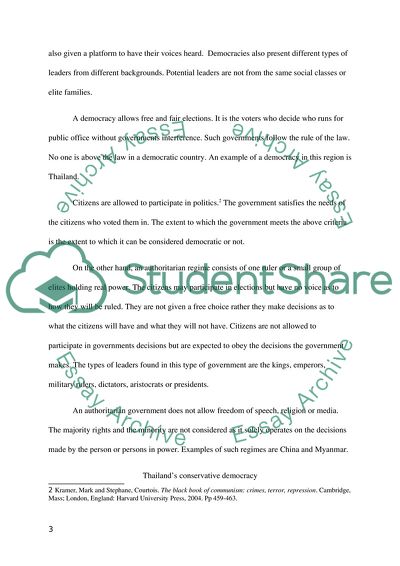Cite this document
(East and Southeast Asia Political System Analysis Thesis Example | Topics and Well Written Essays - 2750 words, n.d.)
East and Southeast Asia Political System Analysis Thesis Example | Topics and Well Written Essays - 2750 words. https://studentshare.org/politics/1844175-why-are-some-countries-in-the-east-and-southeast-asia-persistently-authoritarian-while-so-few-are-democratic-compare-and-contrast-two-or-more-cases
East and Southeast Asia Political System Analysis Thesis Example | Topics and Well Written Essays - 2750 words. https://studentshare.org/politics/1844175-why-are-some-countries-in-the-east-and-southeast-asia-persistently-authoritarian-while-so-few-are-democratic-compare-and-contrast-two-or-more-cases
(East and Southeast Asia Political System Analysis Thesis Example | Topics and Well Written Essays - 2750 Words)
East and Southeast Asia Political System Analysis Thesis Example | Topics and Well Written Essays - 2750 Words. https://studentshare.org/politics/1844175-why-are-some-countries-in-the-east-and-southeast-asia-persistently-authoritarian-while-so-few-are-democratic-compare-and-contrast-two-or-more-cases.
East and Southeast Asia Political System Analysis Thesis Example | Topics and Well Written Essays - 2750 Words. https://studentshare.org/politics/1844175-why-are-some-countries-in-the-east-and-southeast-asia-persistently-authoritarian-while-so-few-are-democratic-compare-and-contrast-two-or-more-cases.
“East and Southeast Asia Political System Analysis Thesis Example | Topics and Well Written Essays - 2750 Words”. https://studentshare.org/politics/1844175-why-are-some-countries-in-the-east-and-southeast-asia-persistently-authoritarian-while-so-few-are-democratic-compare-and-contrast-two-or-more-cases.


